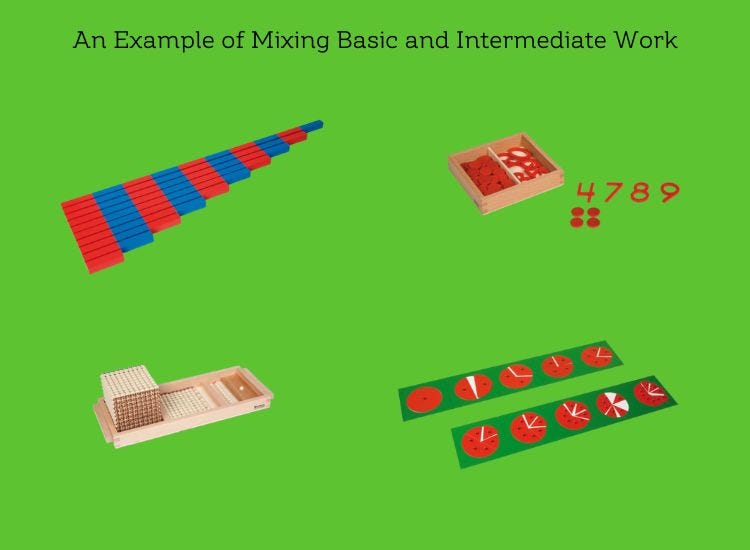Starting Montessori with An Older Child
How to introduce the basics of Montessori reading and math to older children. Start with what you have at home. Do not wait to be ready before you start.
In the last week, a large number of parents with older children joined our Montessori Primary program. Since all of them are new to Montessori and none of the children are reading yet, I thought I’d share basics for everyone in one post.
If your child is seven years old when you begin the Montessori program, there are five basic categories of considerations to keep in mind:
How to introduce equipment that is designed to interest a younger child.
During the 3-6 age range, children are naturally drawn to material such as the Sandpaper Letters, Movable Alphabet, Pink Tower, Teen Boards, and Number Rods. As they get older, children will lose their fascination with this material, but it will still interest some of them. Your challenge will be to read the material carefully and then figure out the mix of work for your particular child. It will be a process of trial and error, especially if this is your first time working with Montessori equipment and methodology.
Overcoming your desire to speed through basics because you are worried that you started late.
Squash that desire! Regarding schedules, there is nothing you can do to “make up” the time. Now is the time it is. And a short delay never doomed anyone.
The worst thing to do is make your child feel as if he or she is delayed. Begin by observing your child’s interests keenly and accurately, using the Montessori journal to keep track of progress. Never try to coerce your child into a specific lesson. If your child has not responded well to the equipment you selected on one day, wind that lesson up gracefully. Then, write the results in your journal so you can look for patterns and adjust your selection of work, timing, or perhaps the lunch that contained food allergens.
Food intolerances can wreck a life. I know one middle-aged guy who just found out that his daily bowel troubles, stomach problems, and foul mood were due to dairy intolerance (and likely the poor quality of the dairy he selected), so he stopped his morning yogurt. But what a waste. He’d been having yogurt for breakfast his whole life because his parents didn’t figure out what was wrong with him. His mood changed, but he has decades of poor habits to overcome.
Remember not to skip Practical Life and other topics. And I highly recommend not posting about your journey online — keep your teaching journal private until later, if you do want to share it. Comments will likely make you more stressed. It is important to make the homeschooling days fruitful and good during these times, so you need to be centered.
Avoiding “junk” work.
As parents panic, they tend to overbuy products advertised online to “supplement” traditional Montessori work. Flash cards and worksheets are the usual culprits because parents see advertisements. Unless your child has found something in a bookstore that calls to him or her specifically, please do avoid this category of stuff.
Drilling your child on basics.
No! This is similar to point #2. Your child will only come to despise learning (and learning from you) if you forego the “following your child” concept that includes figuring out what presentation will interest your child.
Adults have an unfortunate habit of becoming fixated on a certain skill that they want the child to master, but that fixation has nothing to do with the reality of the child in front of them. “Mental math” is one such fad that captivates many adults who feel their own math skills are poor. There is no substitute for hands-on foundational work.
Customize your mix of equipment.
As you introduce the basics, include one piece of associated work from a more advanced level. For example, look at the graphic at the top of this post with the four pieces of equipment: Cards and Counters, Number Rods, Golden Bead Intro Tray, and the Fractional Circles. Normally, we would wait on the fractions, but they are a popular piece of equipment with older children who are not ready for other work. And the fractions are a different category of math, so introducing them now is fine.
Here’s some useful prior posts on the Pink Tower, Teaching Schedules, and Montessori Teaching Journal 2025.
Review Dr. Montessori’s The Montessori Method. The link sends you to the free document on Gutenberg.
Remember to sing with your child!
I love the way she sings in the car. It is a great habit to develop with your children.



